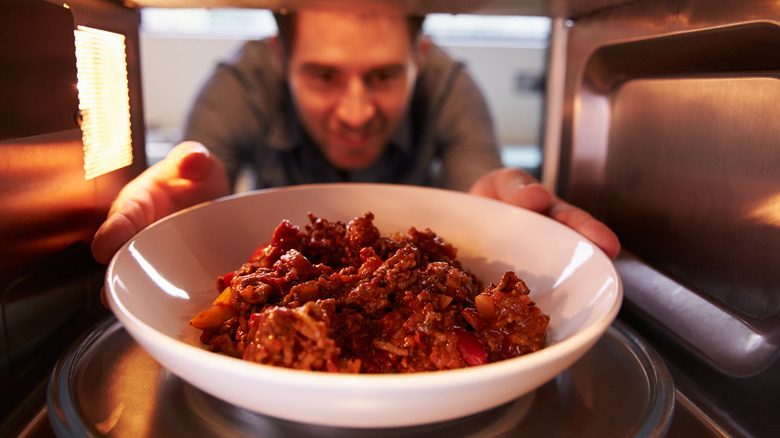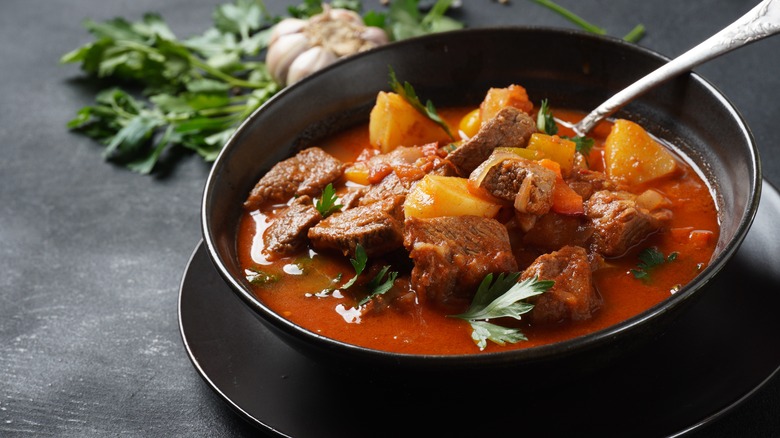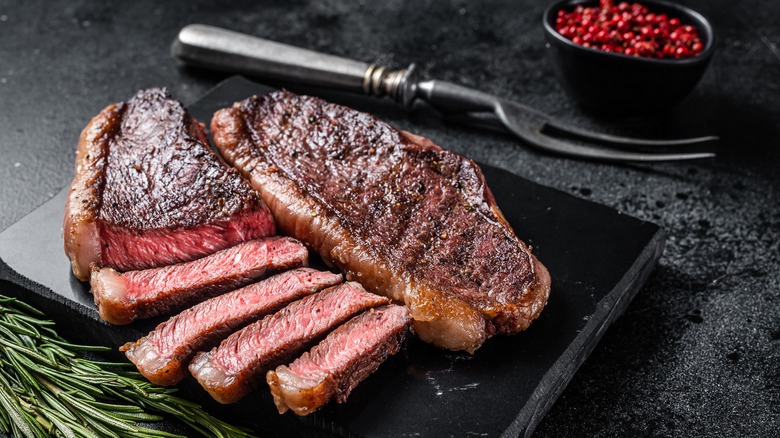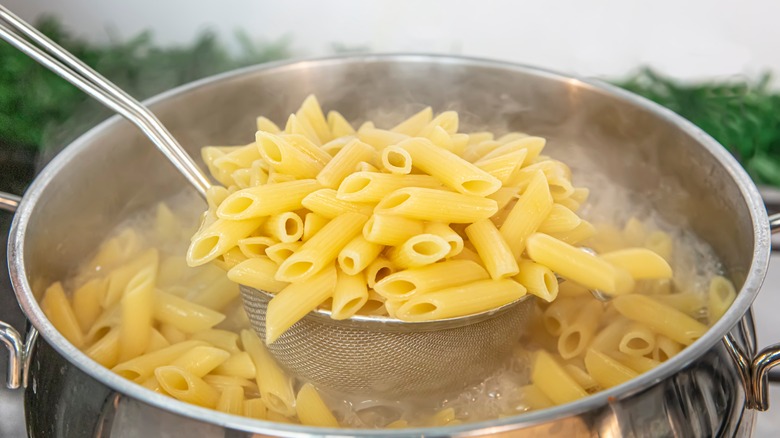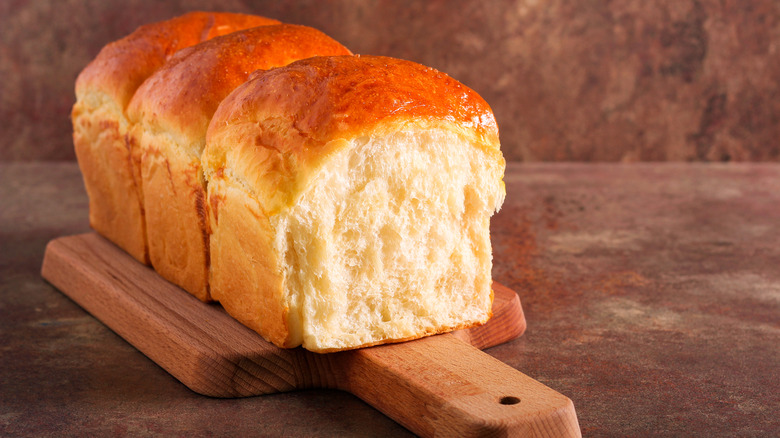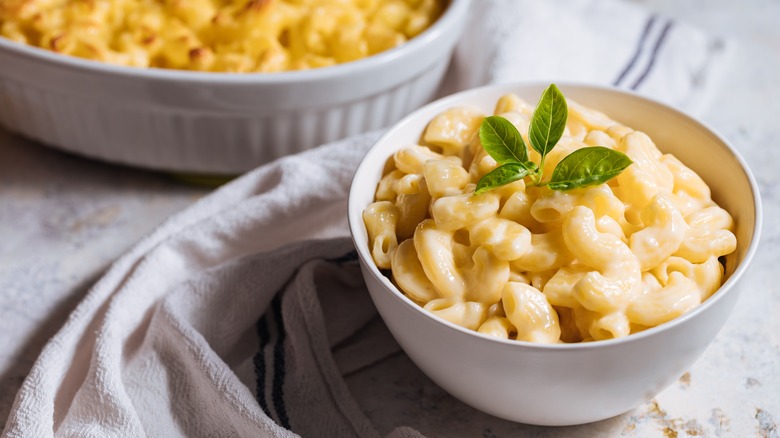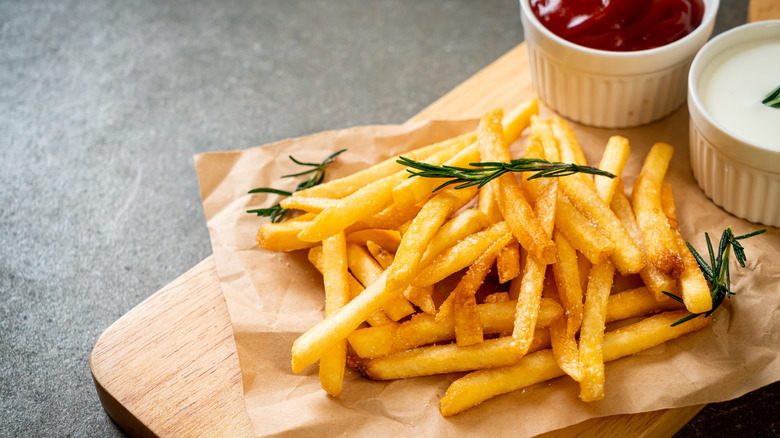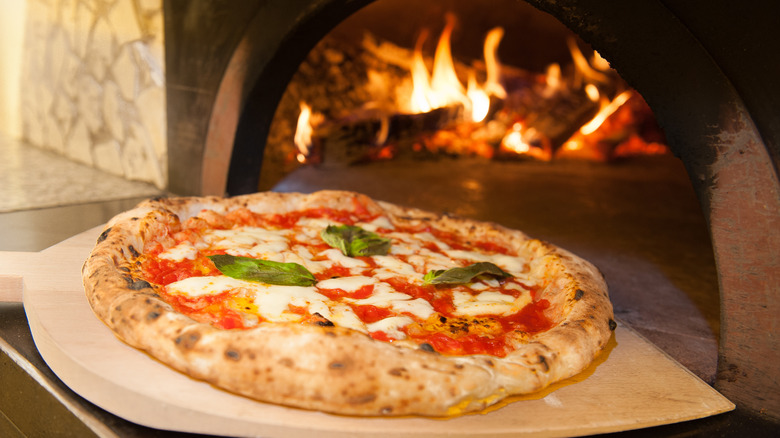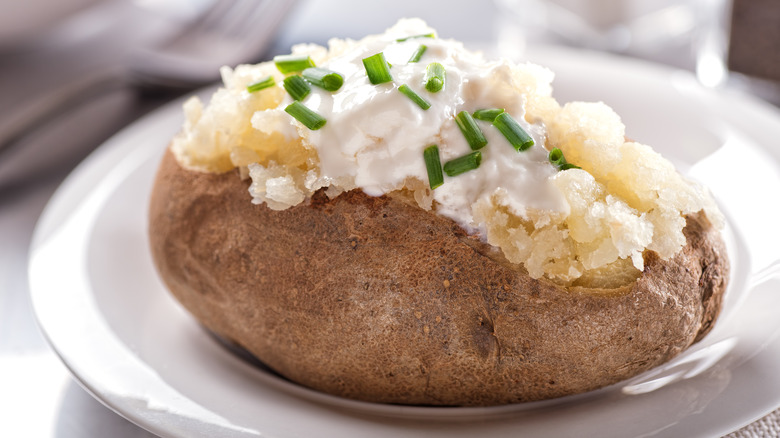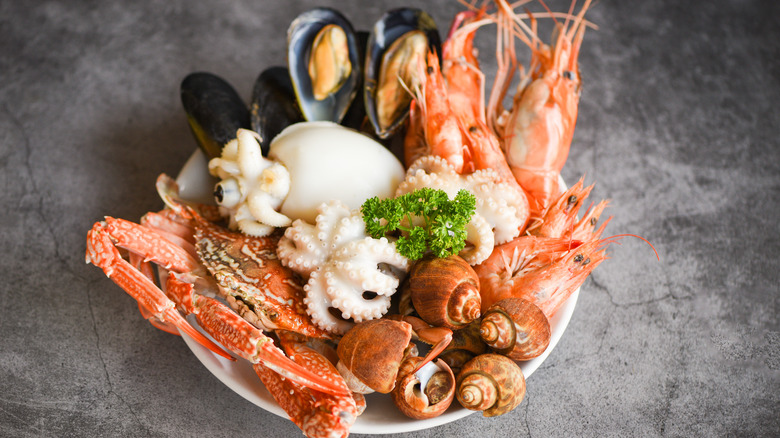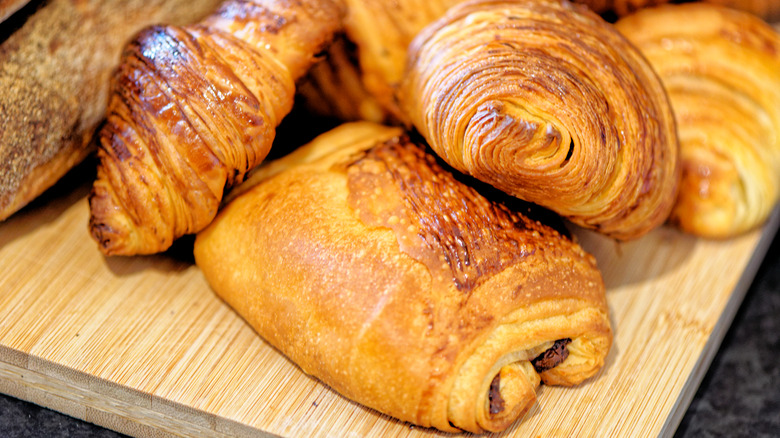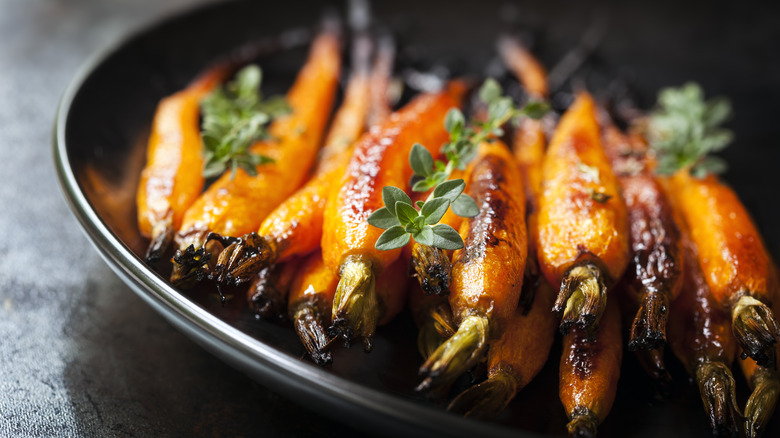11 Foods You've Been Reheating Wrong This Whole Time
Whether you're looking to implement more meal planning into your routine or simply could not tackle your entire dinner when you last went to a restaurant, we all inevitably wind up with leftovers in our refrigerator. Leftovers are probably a food group you hate to love or love to hate; some people swear by them as a means of saving money, while others shake their heads at the thought of soggy french fries and wilted vegetables.
If you find yourself in the latter category, perhaps you haven't been reheating your food in the optimal way. If you are using your microwave nine out of 10 times to reheat a meal, then we have a world of good news for you: Leftovers can be just as tasty as they were the night before, but the precise method to guarantee success will vary depending on the food.
Perfecting the art of delicious leftovers ranges from making sure your food is stored properly to maintain freshness, to making sure you heat everything up appropriately. If done correctly, you will never look at leftovers the same way again. Check out an assortment of foods you have probably been reheating wrong, and how you should go about bringing leftovers back to life.
1. Soups and stews
The temptation behind reheating food is to quickly toss it into the microwave and zap it for 60 seconds. We often do not want to make a big production out of leftovers, especially if we are eating them for lunch in the middle of a busy workday. But if you are eating at home and have access to other appliances, you are far better off avoiding the microwave completely and reheating soups and stews on the stovetop.
According to Livestrong, you may need to add extra liquid to your leftover soup if it contains grains that may have soaked up some of the preexisting liquid overnight. Bring it to a quick boil and then lower the heat to a simmer. If you must use a microwave to reheat soups or stews, do not set the timer just once for the food to fully reheat. Instead, heat in small bursts of time and stir in between to make sure the food is reheating evenly. This is especially useful if your soup or stew contains larger chunks of food such as meat. You'll want to ensure that everything heats all the way through to the proper temperature.
2. Meat
It's pretty common to reheat meat, especially if you are meal prepping for the week or made a large dinner and have leftovers for the following day. But improper reheating can totally ruin the texture, and you may find yourself reaching for a different lunch than originally intended. Keep in mind that if you have a full plate of food from dinner the night before — say a roast with mashed potatoes — you will likely need to reheat the food separately for best results.
According to CNET, one of the best ways to reheat meat is by using a cast iron skillet (or a normal frying pan if you don't have one). If the meat you want to reheat is braised or was originally made in a slow cooker, then partially immersing it in broth will help revitalize its juiciness. Speaking of broths, you can thinly slice leftover meat and add it to a soup to completely transform your original dish into something new. Meanwhile, America's Test Kitchen recommends reheating certain cuts of steak in the oven, followed by a quick sear on the stovetop.
3. Rice and pasta
Rice and pasta are two super affordable yet filling side dishes that make for great meal prep ideas when you need a starchy food to complete a dish. However, reheating rice and pasta can actually be trickier than you would imagine. In fact, leftover rice can become toxic if not stored properly, so make sure you are taking proper care to refrigerate it so you don't accidentally reheat something that could cause you to become ill. If you have leftover rice from the night before, you can transform it into a savory fried rice dish with a handful of additional ingredients from your pantry.
When it comes to pasta, you want to be careful about reheating it as the microwave can easily cause it to become overcooked. Instead, you are better off tossing leftover noodles in a frying pan for a few minutes. Many sauces used in pasta dishes can separate overnight and transform from a rich and creamy texture to a sad oily coating the day after. It may be a good idea to have some extra sauce on hand when reheating, in case the pasta has absorbed it all in the fridge.
4. Bread
Whether you baked a fresh loaf of bread earlier in the week or have some leftover dinner rolls you want to eat before they go stale, it can be a little confusing to figure out the best method for reheating bread. Should you put slices in the toaster? Is it worth the extra time to warm it in the oven? Do you risk it all and heat bread in the microwave?
According to Baking How, it is not so much the vessel in which you reheat your bread but the additional steps you take that matter. For example, sprinkling a little bit of water on the bread before reheating will help it from drying out completely and becoming as hard as a rock. If you are reheating soft bread, then wrapping it in foil before tossing it in the oven will also help. If you choose to reheat your bread in the microwave, then use a damp towel instead.
On the other hand, if your leftover bread has already gone stale, there is no immediate cause to throw it out. You can repurpose stale bread in a way that is totally safe and even tasty, such as transforming it into breadcrumbs or using it as the base for a bread pudding.
5. Macaroni and cheese
There are few things in life more disappointing than attempting to reheat a perfect bowl of mac and cheese, only to find that the sauce has totally separated and you are staring at a pile of noodles soaking in a puddle of oil. Unfortunately, this comfort food is notorious for its sauce separating, often as a result of improper reheating.
No matter how you choose to reheat macaroni and cheese, the secret element to bringing it back to life is to add a splash of milk. This will bring back much-needed moisture to the cheese so the sauce does not completely separate and dry out (via Southern Living). You also want to avoid overheating it, so if you are opting to quickly reheat in the microwave, make sure the setting is at 50% and stop occasionally to stir. You can also add extra cheese, butter, or additional toppings so that your macaroni and cheese more closely resembles a fresh batch right out of the oven, rather than day-old leftovers.
6. French fries
We have all been there; you order dinner with a side of fries at your favorite restaurant, only to find yourself full before the plate is done. You ask for a box to bring your dinner home, and the next day you remember a full plate of french fries is calling to you from the fridge. You pop them into the microwave and much to your horror, they come out completely mushy and not at all appetizing. Understandably, some people may consider french fries a total no-no when it comes to reheating leftovers.
However, there is a way to reheat leftover french fries so they come out just as crispy as the previous day. You may think the oven is the better method, but according to Wishful Chef, the best way to get french fries crispy again is to use a heavy-bottom frying pan. The contact between the fries and the pan will crisp them up as if you had just received a fresh plate. If you do choose to reheat leftover fries in the oven, preheat your baking sheet first to acquire that restaurant-quality texture.
7. Pizza
If you have a hard time figuring out how to reheat your favorite foods, a good rule to follow is that the best method is usually the one used to originally cook the dish. Case in point: The best way to reheat a slice of pizza is to throw it in the oven.
Nobody likes a soggy, gummy slice of leftover pizza, but that is what you will end up with if you choose to reheat it in the microwave. Avoid this catastrophe altogether by turning on your oven and placing a baking sheet on the rack to heat. That way, the bottom of the pizza will get perfectly crispy once again.
If you happen to have an air fryer, CNET recommends using it to bring a slice back to life. This would work with a single slice, but if you have several slices or an entire pizza, you may want to use a larger space such as an oven.
8. Baked potatoes
A freshly baked potato is true comfort food, especially if it comes topped with cheese, sour cream, chili, chives, bacon, and more cheese (okay, you get the picture). For a simple starch as beloved as the potato, the last thing you want is to reheat it improperly and ruin the texture.
For starters, reheating a baked potato correctly begins from the moment you store it; make sure to let it cool completely before refrigerating it (via Southern Living). When you are ready to heat it, use the oven, stovetop, or even a grill. If you opt for the microwave, just make sure that the potato is covered with a damp paper towel. You also do not need to reheat a baked potato in its original form; dice it up and toss it in a frying pan with butter for some tasty home fries.
Toaster ovens and air fryers are also useful countertop appliances that work well to reheat baked potatoes. You have a number of options, so there is no need to let your leftover potatoes go to waste. Keep all of your favorite toppings on standby, and you won't even taste the difference between a freshly baked potato and a reheated one.
9. Seafood
We won't blame you if you avoid reheating seafood of any kind altogether. It is a tricky food to cook correctly the first time, so it is understandable that reheating fish, scallops, shrimp, or any other kind of seafood is just as difficult. And when you consider the fact that seafood can be unsafe if improperly handled, you may opt to skip the leftovers altogether. Thankfully, with a few easy tips you can repurpose seafood leftovers.
If you have shellfish in your refrigerator, you can combine it with other ingredients, such as a pasta dish or stew, to reinvent the protein in a new way. One Redditor suggests this method, using leftover shellfish like shrimp as an added ingredient in their soups and stews. You can also simply add cooled cooked shrimp into a taco salad for an instant, easy, yet elevated lunch idea.
Meanwhile, if you want to reheat a seafood boil, toss it all into the oven or in a pot on the stovetop. It ultimately comes down to what kind of seafood you are looking to reheat, but you actually have more options than you would think. That being said, across the board, you are better off avoiding the microwave when reheating any kind of fish or shellfish.
10. Pastries and baked goods
There is no need to toss out uneaten pastries and baked goods, so if the dessert round leaves you with a table full of goodies, box them up and have them later. Similarly, you are less likely to enjoy an entire box of pastries in one sitting, so you will probably find yourself with leftovers if you make a trip to the bakery. And while it may be tempting to throw a cream puff or other baked goods into the microwave to enjoy a quick snack, you are better off reheating similar sweets in the oven (via The Chef's Wife).
Your microwave may come in handy when reheating a pastry like a muffin that is dense and moist and less likely to dry out. In this case, make sure your microwave is set to 50% power so you do not accidentally zap out all of that moisture (via Leaf). Otherwise, you are going to want to opt for your oven and set it at a low temperature to reheat most desserts and baked goods. Make sure you are storing your pastries in an air-tight container so they do not get stale too quickly.
11. Vegetables
Vegetables may be the one food group you find yourself reheating the most, whether you are meal prepping a week's worth of meals or reheating dinner from the night before for lunch. Since this is such a broad category, the general rules to follow include reheating them with the same method used to cook them, and being careful not to overcook them.
According to The U.S. Sun, you are better off using your oven when dealing with leftover roasted vegetables. Steamed veggies, on the other hand, are a little more versatile and can be reheated in a number of ways, including in the microwave or in a hot pan. The key is to make sure you do not overcook them. There's nothing less appetizing than a plate of soggy vegetables, so pay attention to achieve an optimal taste and texture. If you overdo it and end up with mushy results, you can always make soup.
